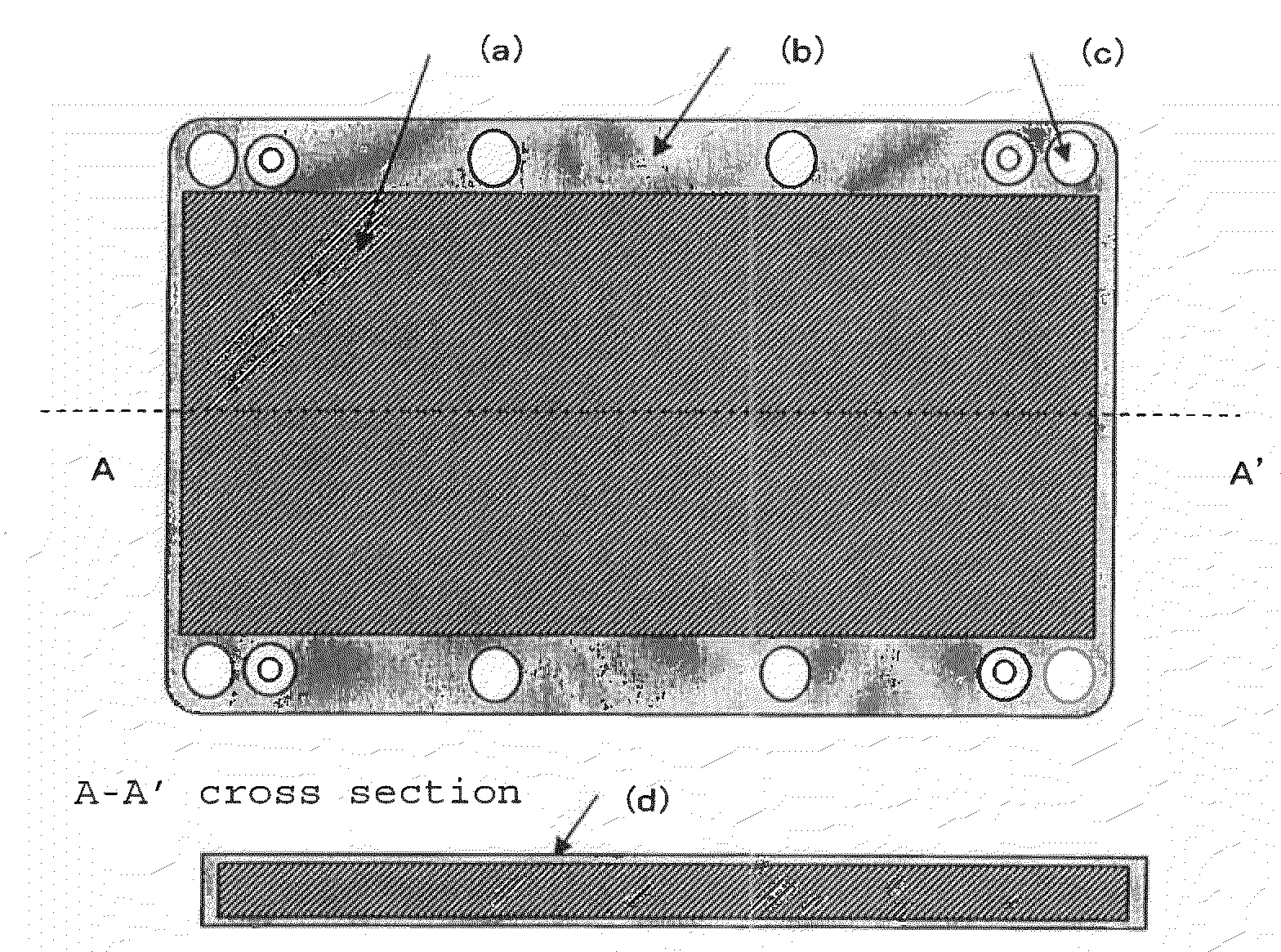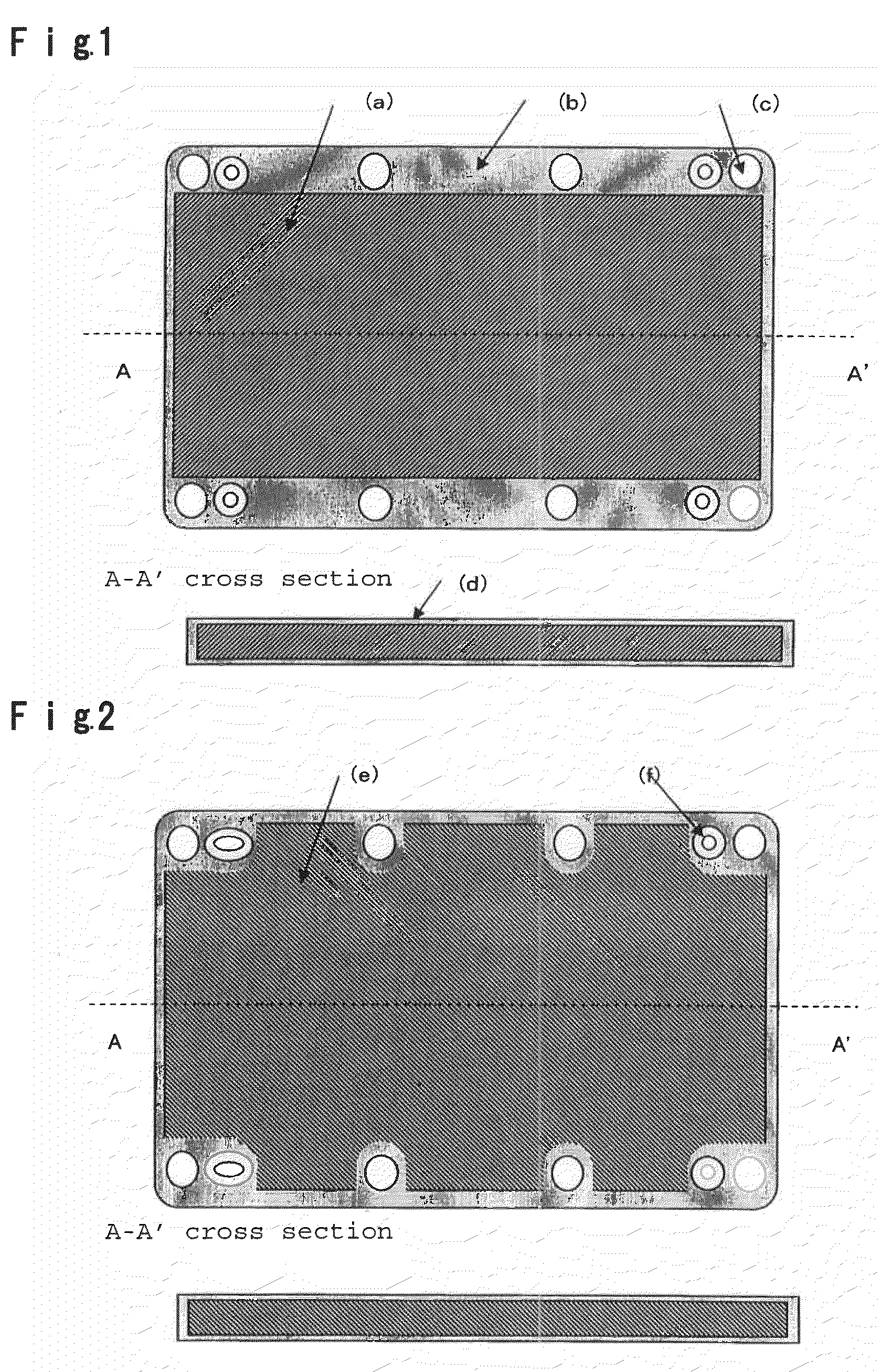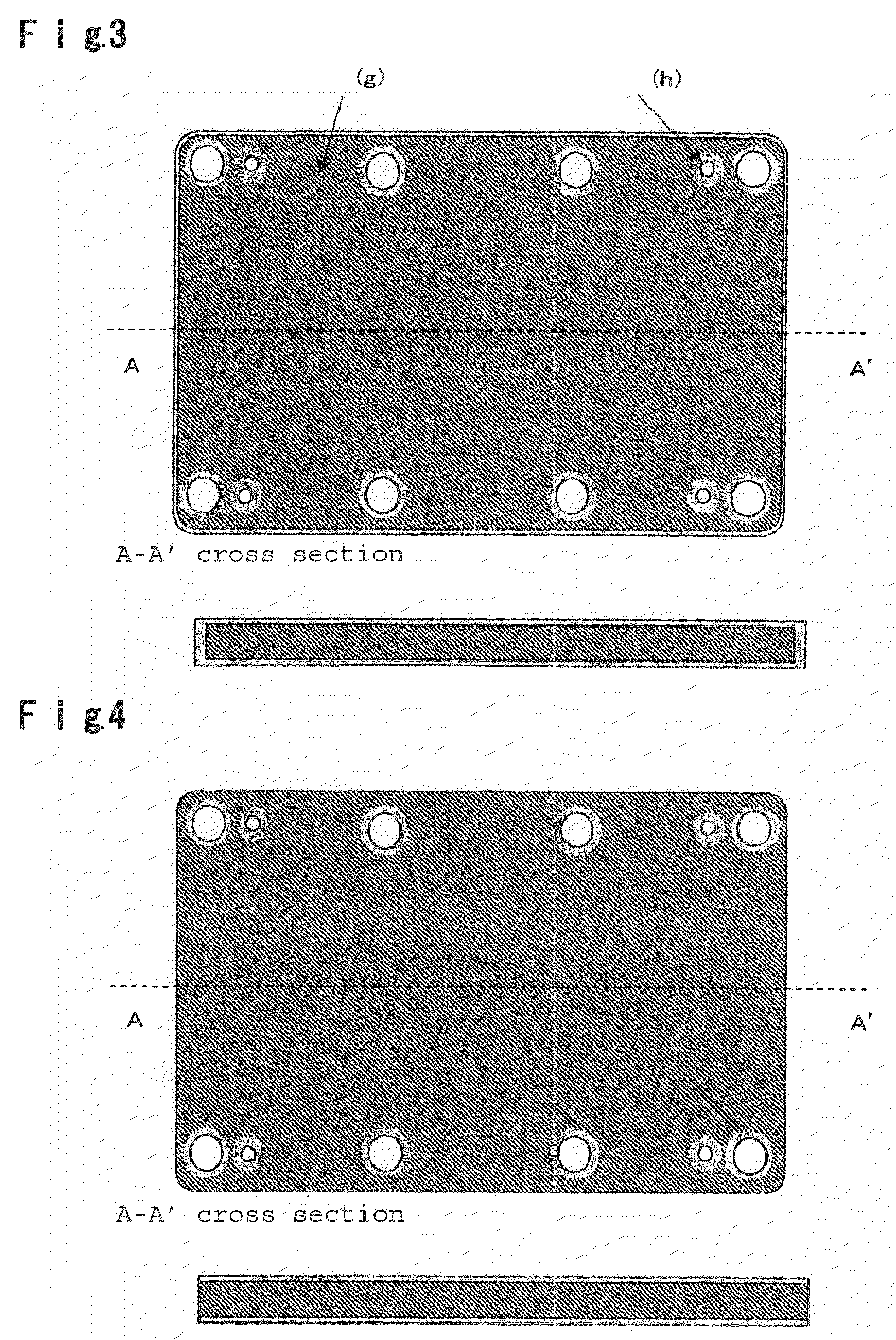Aluminum/silicon carbide composite and radiating part comprising the same
a technology of silicon carbide and composite materials, applied in the field of aluminum/silicon carbide, can solve the problems of semiconductor chip malfunction or destruction, simple increase in heat generation amount of such semiconductor chips, and failure to efficiently dissipate such heat, etc., to achieve low thermal expansion, impart plating capability, and high thermal conductivity
- Summary
- Abstract
- Description
- Claims
- Application Information
AI Technical Summary
Benefits of technology
Problems solved by technology
Method used
Image
Examples
example 2
[0075]A SiC preform having a relative density of 66% was obtained in the same manner as Example 1 except that 150 g of silicon carbide particles A (manufactured by Pacific Rundum Co., Ltd.: NG-150, average particle size: 100 μm), 50 g of silicon carbide particles D (manufactured by Pacific Rundum Co., Ltd.: NG-500, average particle size: 30 μm), 100 g of silicon carbide particles C (manufactured by Yakushima Denko Co., Ltd.: GC-1000F, average particle size: 10 μm) and 30 g of silica sol (manufactured by Nissan Chemical Industries, Ltd.: Snowtex) were used as raw materials. A surface of the SiC preform obtained was ground by a surface grinding machine by using a grinding stone made of diamond so that the sample had a thickness of 4.9 mm, and the peripheral portion was machined to have an outer dimension of 183×133 mm and have the shape shown in FIG. 2. Table 3 shows the measurement results of the thickness of SiC preform after machining.
TABLE 3MeasurementItempointEx. 2Preform14.92thi...
example 3
[0078]A SiC preform was produced in the same manner as Example 2 except that the SiC preform was sintered in an atmospheric air at 1,100° C. for 2 hours. The three point bending strength of the preform obtained was 12 MPa. Table 5 shows the measurement results of the thicknesses of the SiC preform after machined. Then, the fastening torque was changed to 10 Nm, and an aluminum-silicon carbide composite was produced in the same manner as Example 1, it was subjected to a plating treatment in the same manner as Example 1 and evaluation was made in the same manner as Example 1. Table 6 shows the results.
TABLE 5MeasurementItempointEx. 3Preform15.01thickness25.01(mm)34.9945.0255.0065.0174.9885.0195.01Average (mm)5.00Maximum (mm)5.02Minimum (mm)4.98Thickness difference0.04(mm) *1*1: Thickness difference = the difference between maximum and minimum
TABLE 6ThermalAl layer thickness (μm)ThermalexpansionA surfaceB surfaceWarpageRecessconductivitycoefficient(concave surface)(convex surface)amoun...
example 4
[0079]An aluminum-silicon carbide composite was prepared in the same manner as Example 1 except that the shape of the SiC preform was 190×140×5.3 mm. In the composite obtained, 8 through holes of 8 mm in diameter were formed in the peripheral portion of the composite, and its circumference was machined by a abrasive jet cutter so that the dimension of the composite became 187×137 mm (corner portions were each R7 mm) (refer to FIG. 5). Then, in order to warp the aluminum-silicon carbide composite, a concave-convex mold having a spherical surface of a curvature radius R=12,000 mm made of carbon was used to warp the composite in the same manner as Example 1. Subsequently, the composite was subjected to a blast treatment under a pressure of 0.4 MPa and a feeding speed of 1.0 m / min with alumina abrasive particles, so as to be cleaned. Thereafter, the composite was subjected to electroless Ni—P and Ni—B platings, and as a result, a plating layer of 8 μm thick (Ni—P: 6 μm+Ni—B: 2 μm) was f...
PUM
| Property | Measurement | Unit |
|---|---|---|
| thickness | aaaaa | aaaaa |
| thicknesses | aaaaa | aaaaa |
| thicknesses | aaaaa | aaaaa |
Abstract
Description
Claims
Application Information
 Login to View More
Login to View More - R&D
- Intellectual Property
- Life Sciences
- Materials
- Tech Scout
- Unparalleled Data Quality
- Higher Quality Content
- 60% Fewer Hallucinations
Browse by: Latest US Patents, China's latest patents, Technical Efficacy Thesaurus, Application Domain, Technology Topic, Popular Technical Reports.
© 2025 PatSnap. All rights reserved.Legal|Privacy policy|Modern Slavery Act Transparency Statement|Sitemap|About US| Contact US: help@patsnap.com



